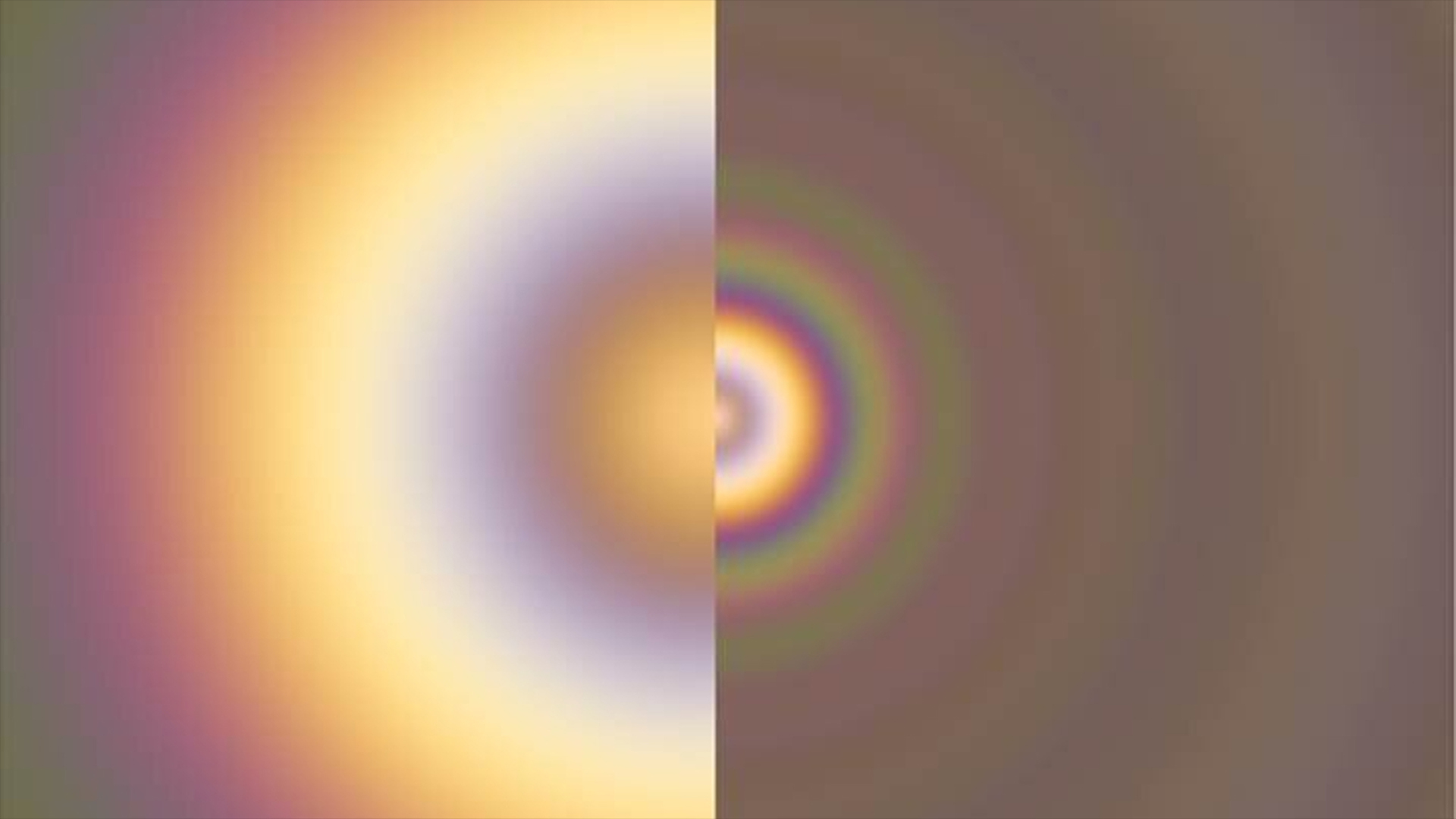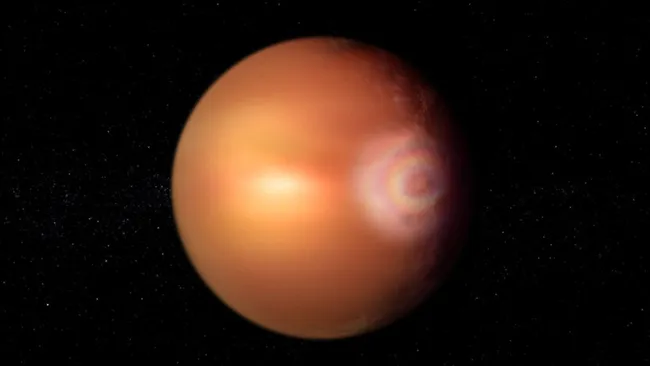
We are talking about the exoplanet WASP-76 b, which delighted researchers with a bright light show, better known as a “gloria” – until now, it has been observed only within the Solar System.
The planet of hell
WASP-76 b is located about 637 light-years from Earth and was first discovered in 2013. It is believed that the planet, which is about 90% of Jupiter’s mass (but about twice as wide), destroyed its Mercury-sized neighbor in the past. Also, WASP-76 is extremely close to its star – one revolution around it takes 1.8 days.
In 2020, researchers discovered that the planet is tidally locked, meaning that one side is always facing its home star (just as the Moon faces the Earth). As a result, the temperature of the illuminated side reaches 2400 °C (that’s why the planet is hellish), while the dark side is colder. This slight difference causes metals such as iron to vaporize on the light side and then condense as rain on the dark side.

A bright spot
In a new paper published in early April in the journal Astronomy & Astrophysics (via Live Science), researchers analyzed new data on WASP-76 b collected by several spacecraft (including ESA’s Cheops satellite). Eventually, a strange bright spot of light was discovered along the eastern edge of the exoplanet at the border where the planet’s permanent day and night meet.
The researchers suggest that this bright spot may be a gloria, a rare optical phenomenon that can be seen on Earth and usually consists of concentric iridescent rings forming a giant circle.

On Earth, gloria are formed when sunlight penetrates through small openings between water molecules in clouds or fog, refracting and splitting into separate waves. Rainbows work in a similar way – except that light is bent due to diffraction (i.e., when light bends around an obstacle instead of refraction, or when light bends as it passes through different media).
“Very special conditions are needed,” says Olivier Demangeon, lead author of the study, an astronomer at the Institute of Astrophysics and Space Sciences in Portugal.
“Atmospheric particles must have a close to perfect spherical shape, be completely homogeneous and sufficiently stable.”
And the correct orientation of the observer also plays a role. It is quite possible that under similar conditions the effect can be seen on other planets (astronomers have previously observed gloria on Venus).
“We need to look for more evidence to say conclusively that this intriguing ‘bright light’ is a rare gloria,” said Therese Lüftinger, an ESA astrophysicist who was not involved in the study. “We will likely need more powerful instruments, such as those on the James Webb Space Telescope.”

